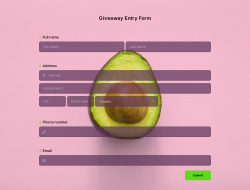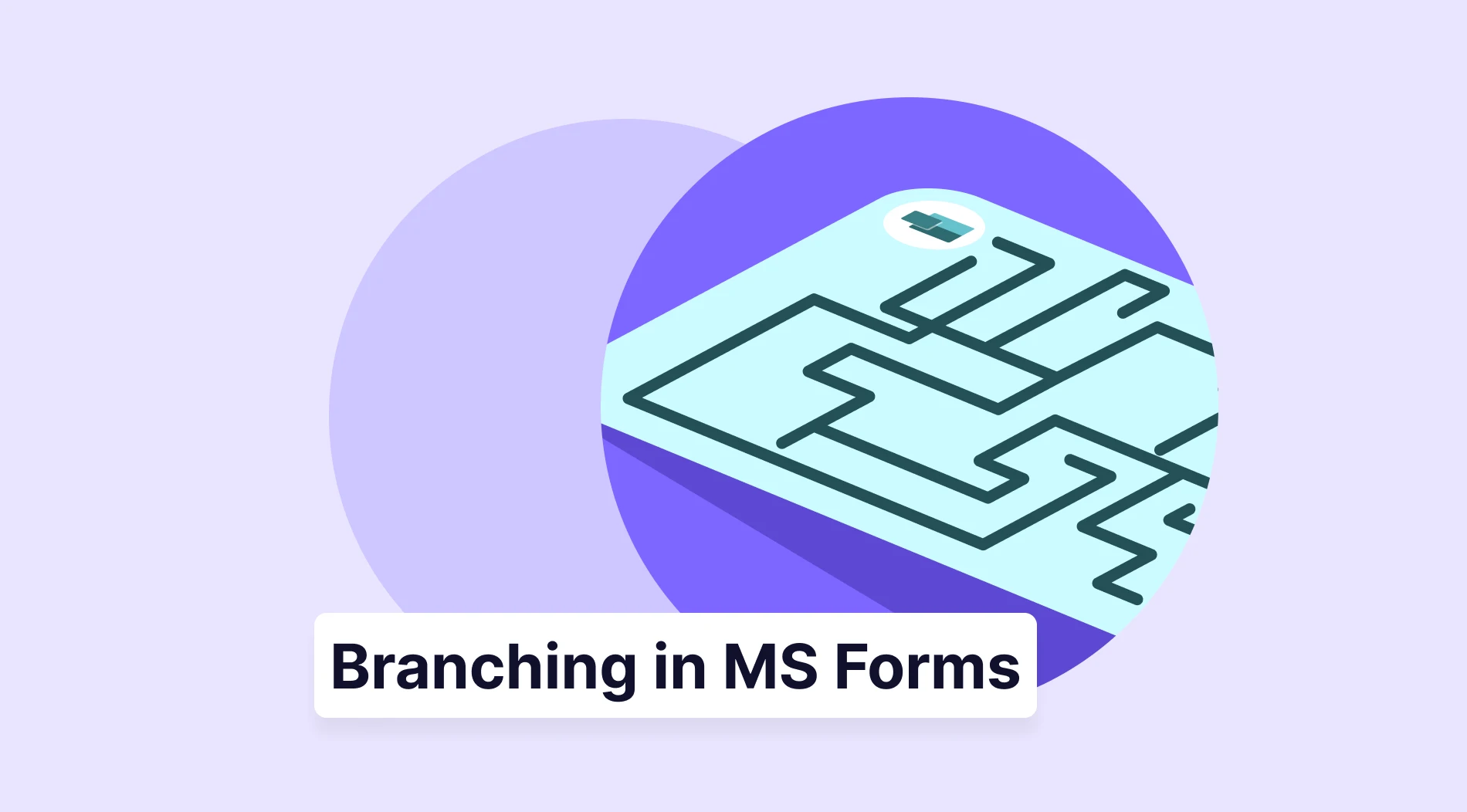Stop Juggling Paper, Start Collecting Data
There is no need for paper and pen while organizing an event, gathering, joining a membership, or receiving services today. But simply moving your form online isn't enough. You need a system that's efficient, secure, and legally compliant.
Stop juggling spreadsheets and worrying about illegible handwriting. The digital age demands instant, trackable, and efficient event management. If you want to learn more about how to make an online registration form that converts and collects data reliably, you are in the right place.
This guide, written by a form design expert, explains what a registration form is, the essential components you must include for success, and a step-by-step guide to building your own to ensure legal compliance and smooth payment processing.
What exactly is an online registration form?
An online registration form is a digital form used to collect information from attendees, applicants, or members, transforming a manual data-collection process into an automated, trackable workflow.
A form field can have questions about personal information, such as contact information, address, email, or social media. The registration form can be created for many reasons: education, business, events, or community.
Modern forms do more than just collect emails or phone numbers. They can instantly process payments, capture legal consent via a checkbox, and automatically send confirmation emails, making the process easier for both the creator and the attendee.
When do experts use registration forms? (4 high-impact scenarios)
The main goal is to help people sign up, but the usage scenarios are diverse. Experts use forms in these high-impact moments to maximize conversions and efficiency:
- Event & Conference registration: Collecting basic attendee data, managing ticket tiers, and gathering necessary logistical details like dietary restrictions or accessibility needs for large gatherings.
- Membership & Community sign-up: Onboarding new members for clubs, associations, or online communities, often including a recurring payment option and agreement to membership rules.
- Webinar & Workshop sign-ups: Capturing qualified leads for digital events, automatically segmenting them, and triggering instant confirmation emails with access links.
- Product waitlists & Early access: Gauging interest for future launches, building an exclusive audience, and providing priority access to the most engaged potential customers.
How to create an online registration system with forms.app
Now that you know the importance of online registration, it is time to create one for yourself. You don't need a developer; you can use forms.app’s form builder. It allows you to easily create a form with drag-and-drop .
1. Log in to your account

Open your forms.app account
Start by logging into your forms.app account, but if you do not have one, it is free to register and create a new one in just seconds. You can also log in with your Google or Apple accounts.
2. Create an online form
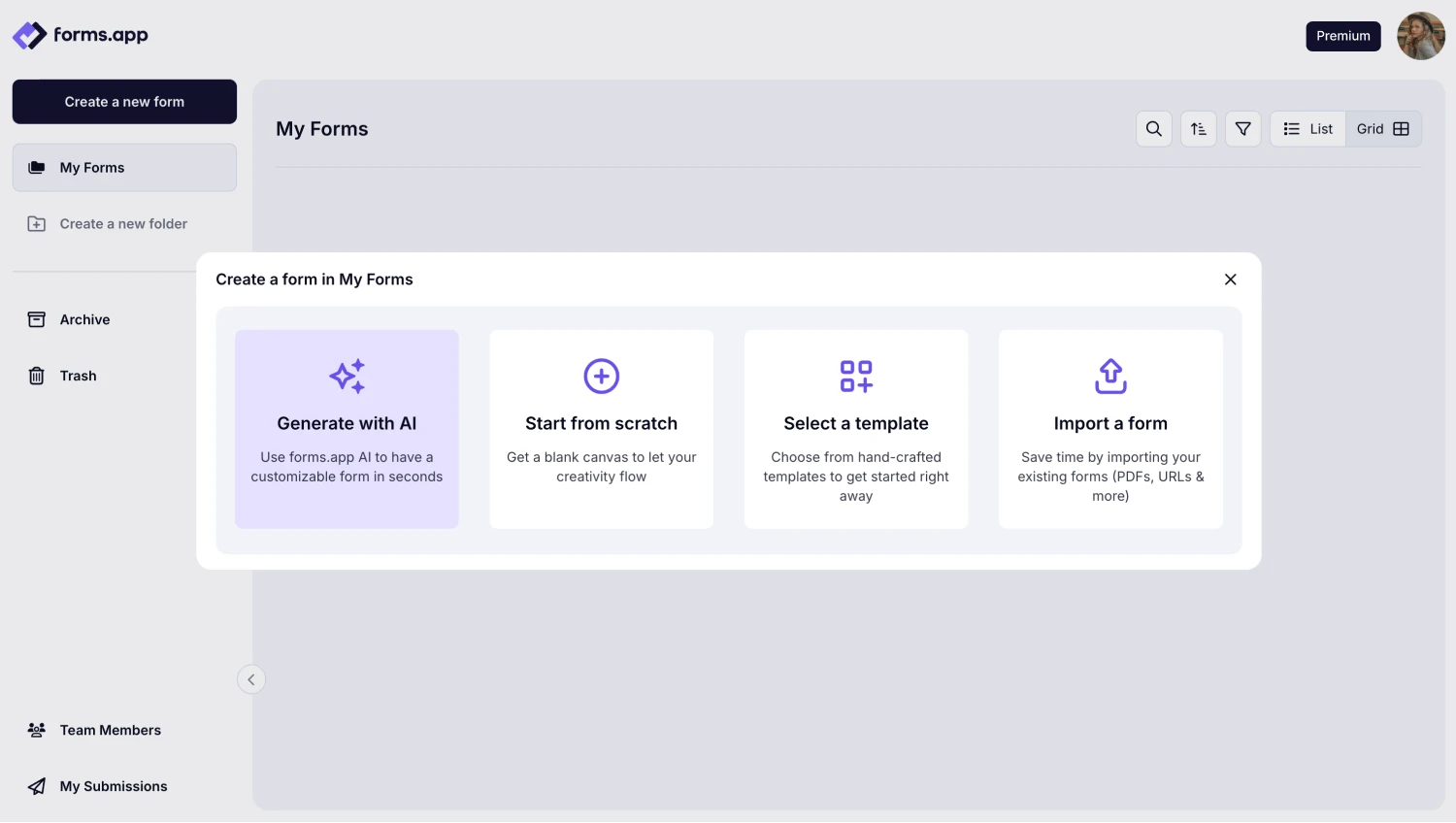
Choose a way to start
You can easily choose a registration form template for free. However, there is also the option to use AI. Just tell us what kind of registration form you need.
3. Personalize the form
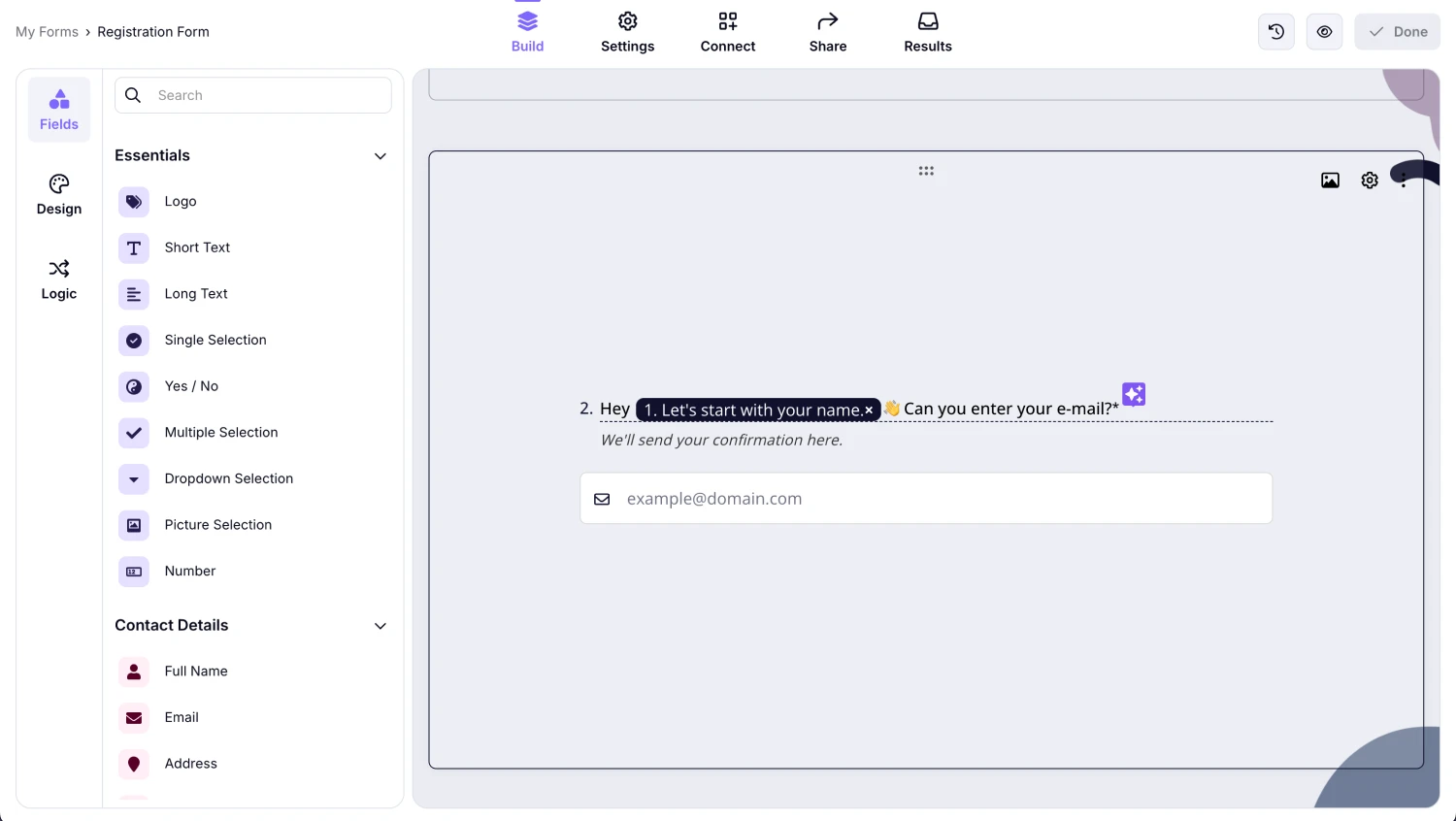
Add questions and fields
You can add your own questions or fields based on your own needs. Each registration form has its own aims, so you should carefully choose the questions. The questions are the heart of your form - don’t forget.
💡 Expert tip: Use conditional logic in your form so participants only see questions relevant to them. This makes the form more personalized and faster to complete.
There are multiple choices for the design of the form. You can change the theme, the font size, answer color, background image, or font. Do not forget to check the design since only a few are mentioned.
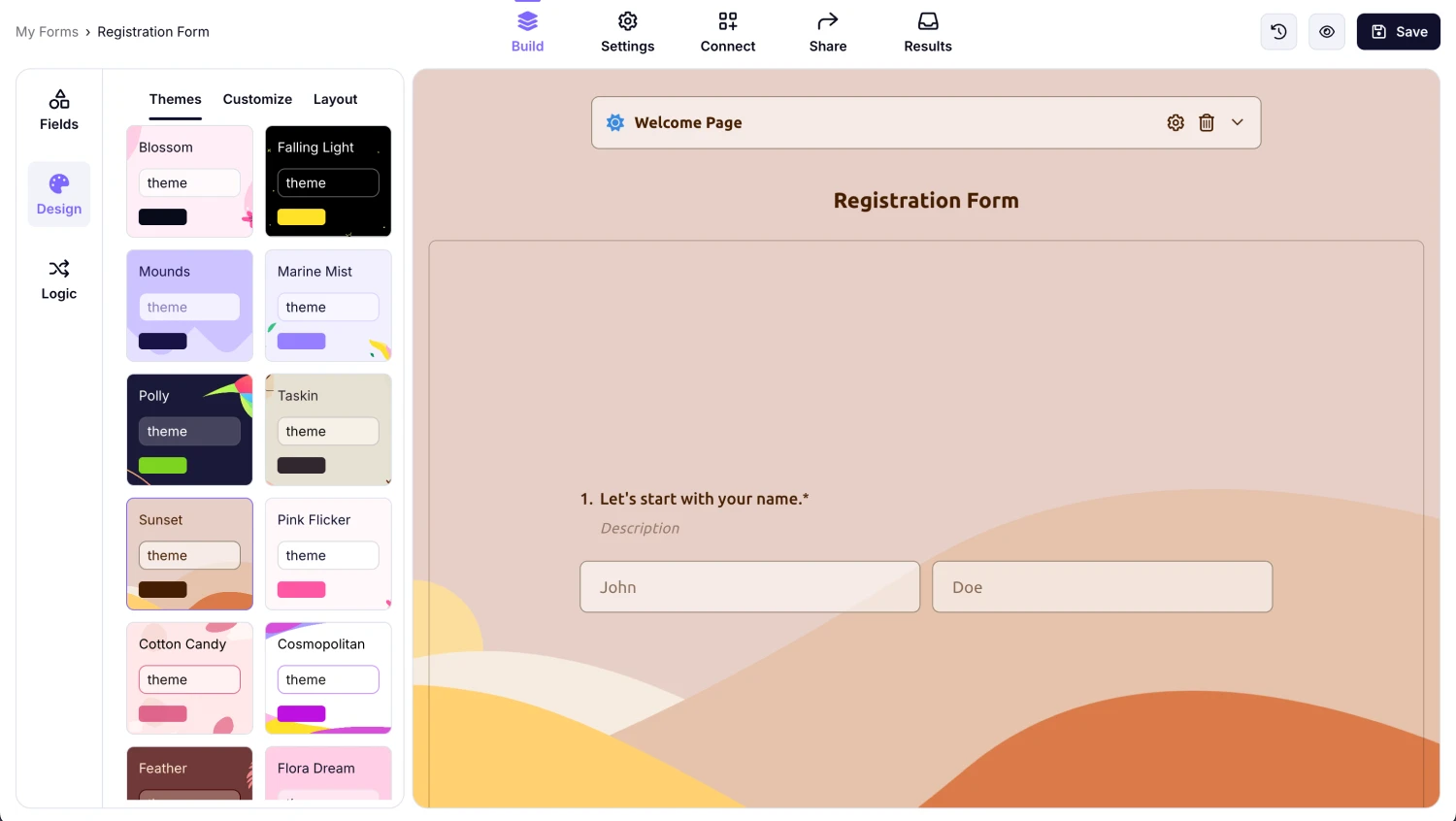
Personalize your registration form
💡 Expert tip: You can add your own company/organization’s logo and cover to the registration form. This will make the online form more attractive and professional.
4. Complete and share your form

Share your registration form
From then on, the only thing left is to share the form on platforms. It is also possible to copy the URL and share it personally with the people. When the answers are gathered, you can directly check them on the Results&Statistics.
💡 Expert tip: Embed your registration form directly on your website to collect more sign-ups and improve your page’s SEO performance.

Embed the form into your website
What to include: The 5 essential components of a high-converting form

Key points to include in a registration form
To make a user-friendly and successful registration form, you must include a few key parts. These elements balance user experience with your data collection needs.
1. Core personal data
Ask only for the information you absolutely need. This typically includes:
- Full Name
- Email Address (The primary communication channel)
- Phone Number (For emergencies or critical updates)
💡 Expert tip: Avoid asking too many questions. The form should be straightforward and easy. Asking only the critical, necessary questions will help the form be used more, since irrelevant questions are discouraging.
2. Specific event/organizational questions
These fields capture event-specific choices and details:
- Ticket Options: Showing different prices or access levels.
- Special Requests: An optional text box for dietary restrictions or accessibility needs.
- "How did you hear about us?" This helps you measure which marketing channels are most beneficial.
3. Payment information
For paid events, a payment section is critical. Ensure your form builder provides SSL encryption and PCI compliance to securely handle credit card data via integrated payment processors such as Stripe or PayPal. This is non-negotiable for user trust.
4. Terms and conditions
To obtain the user's consent, there must be a terms section and a privacy policy. Include a mandatory checkbox that requires the user to agree to your Terms and Conditions and Privacy Policy. This is a legal necessity for GDPR/CCPA compliance when collecting personal data.
5. Confirmation and follow-up message
Once registration is complete, the user needs immediate assurance. The final submission page should display a clear confirmation message. A personalized confirmation email should be sent instantly, providing all event details, a payment receipt, and clear instructions on what happens next.
Free registration form templates for a quick start
If you do not want to create a registration form from scratch, it would be better for you to check templates. These templates will ease your registration process by matching your brand and ensuring data that actually helps.
In short
Online registration forms are essential today, as they benefit both the event creator and attendees. The benefits of having an automated form are countless, from saving time to collecting secure payments.
In this expert guide, we have covered what a registration form is, when to use one, the five essential components to include, and how to make a registration form with no coding, along with key tips for maximizing conversion and maintaining compliance.
Now, it is time to create one for your next event!
forms.app, your free form builder
- Unlimited views
- Unlimited questions
- Unlimited notifications



